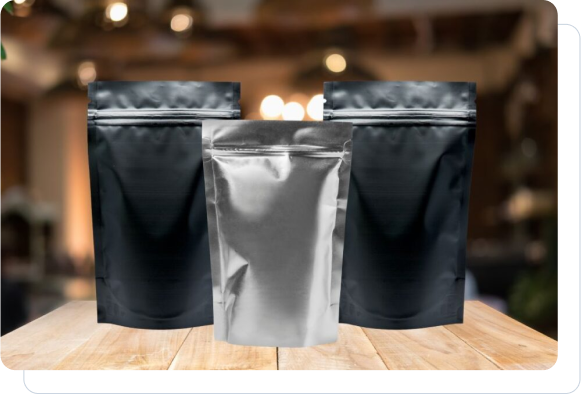Flexible materials used for packaging, insulation, and storage applications involve two main components: aluminum foil and Mylar. Using aluminum foil and Mylar interchangeably leads to differences that prove essential. Selecting an inappropriate material will result in financial loss, poor temperature insulation, and food spoilage. We will analyze the foil vs Mylar competition through properties analysis before determining which material is superior under different circumstances.
What Is Aluminum Foil?
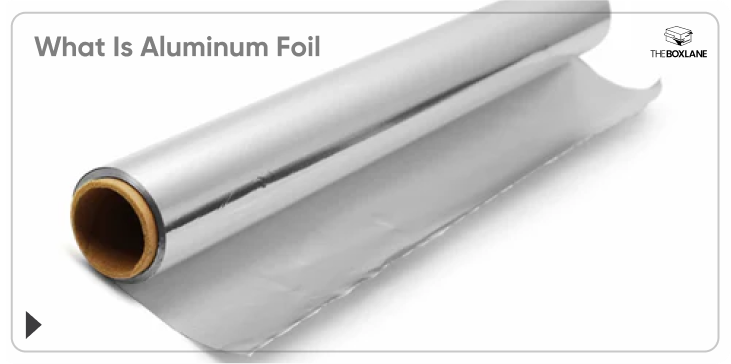
People use aluminum foil frequently at home because manufacturers create it by stretching pure aluminum into extremely thin sheets reaching 0.006 millimeters. Aluminum foil possesses distinctive characteristics from its metallic composition.
Key Properties of Aluminum Foil
- Heat Resistance: The material is heat-resistant up to 1,220°F (660°C), which makes it suitable for oven use.
- Flexibility: The material can easily conform to objects without creating any damage.
- Barrier Protection: Blocks light, moisture, oxygen, and bacteria, ideal for food preservation.
- Conductivity: The metal exhibits both heat reflection and heat conduction properties, which make it suitable for cooking and insulation applications.
Common Uses of Aluminum Foil
- People use aluminum foil to cover food leftovers and to line baking trays.
- Enables electronic and HVAC equipment protection against radiation threats.
- Allows users to use it as a temporary fix for broken windows.
Pros: Affordable, widely available, recyclable, and excellent for short-term food storage.
Cons: Tears easily and reacts to acidic foods and demonstrates shape change under stress conditions.
What Is Mylar?
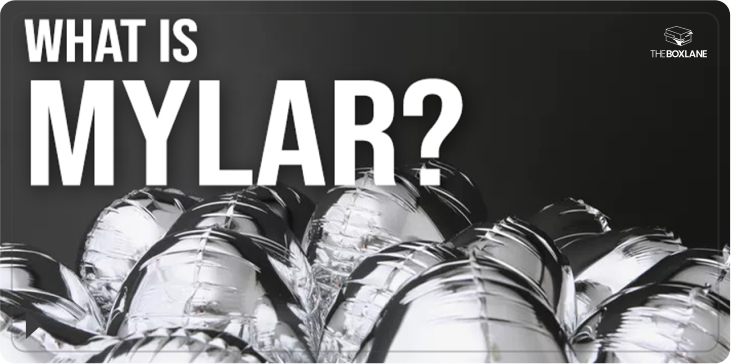
Mylar represents the commercial term for BoPET (biaxially-oriented polyethylene terephthalate), which becomes stronger and clearer through stretch processing. Most commercially available "Mylar" products consist of a plastic base that receives a thin aluminum coating to form metallized Mylar film.
Key Properties of Mylar Film
- Strength: Far more tear-resistant than foil due to its plastic core.
- Heat Resistance: Withstands continuous temperatures reaching 300°F (150°C) because its melting point exceeds foil's.
- Transparency: Clear Mylar serves as an overlay or window material for packaging applications.
- Gas Barrier: Provides exceptional protection against oxygen and moisture transmission across a wide range of humidity levels.
Common Uses of Mylar
- Long-term food storage (e.g., Mylar bags with oxygen absorbers).
- Emergency blankets contain heat reflection properties, while helium balloons retain their shape.
- Insulated packaging solutions exist for pharmaceuticals and electronics.
Pros: Possesses durability and light weight while being non-reactive to food and blocking ultraviolet rays.
Cons: More expensive than foil, not recyclable in most curbside programs.
Foil vs. Mylar: 6 Key Differences
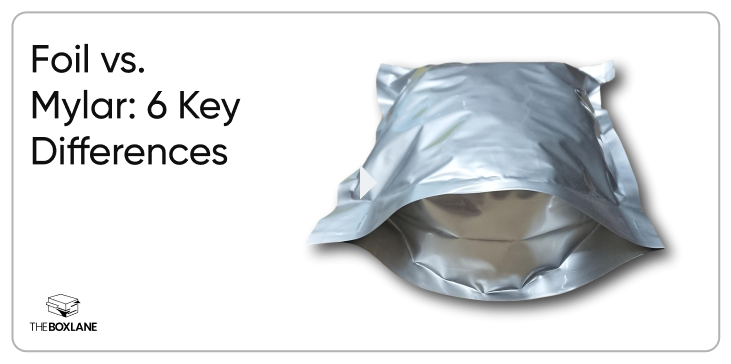
-
Composition:
- Foil is 100% metal.
- Plastic Mylar contains a metal layer on its surface.
-
Strength:
- Mylar provides strength due to its polyester construction that also resists punctures. Foil, on the other hand, becomes crumpled or torn under pressure.
-
Heat Resistance:
- Foil maintains its stability under high cooking temperatures but lets heat pass through it.
- The heat-reflection property of Mylar makes it perfect as a thermal reflective sheet material.
-
Flexibility:
- The shape of foil becomes unstable after bending although it remains more flexible.
- The structure of Mylar remains stable because it differs from foil balloons.
-
Barrier Performance:
- The airtight sealing properties of Mylar make it superior to foil when it comes to extended storage applications.
-
Cost:
- One square foot of foil costs less than other materials. Mylar material costs more than foil because it offers superior longevity.
Aluminum Foil vs. Mylar: Which Should You Use?
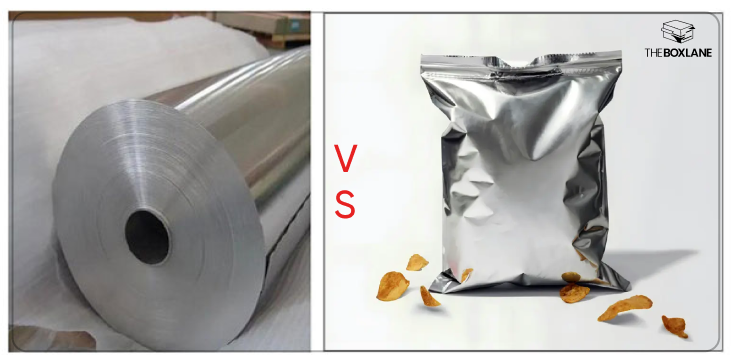
Food Storage
- Short-term: Foil serves as an effective protective layer for sandwiches as well as dish coverage during short-term storage.
- Long-term: Mylar bags with oxygen absorbers enable dry goods (including rice and beans) to last more than ten years when stored properly.
Thermal Insulation
- Reflecting Heat: The reflective surface of Mylar acts similarly to emergency blankets by maintaining body temperature.
- Conducting Heat: The installation of foil lining on oven walls helps to distribute heat evenly throughout the space.
Packaging
- Foil should be used for lightweight food items like candy wrappers.
- Mylar acts as a protective shield for light-sensitive and air-sensitive products such as coffee and vitamins.
Balloons
Mylar balloons rule the market because they keep helium inside longer while avoiding deflation. The lower cost of foil balloons comes with the disadvantage of quicker deflation.
Can Foil and Mylar Be Combined?
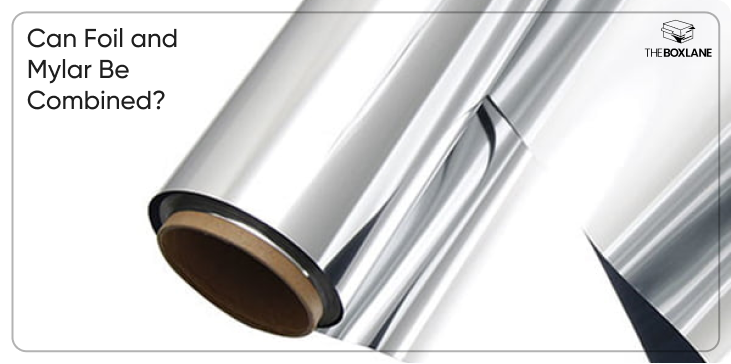
Yes! Metallized Mylar film produces a plastic material with aluminum vapor that combines flexible performance with strong barrier capabilities. This hybrid is used in:
- Space blankets (durable yet reflective).
- High-end snack bags (block oxygen and light).
- Insulated shipping containers.
Frequently Asked Questions
1.Is Mylar a metal?
No, it consists of a plastic film with a metal coating.
2.Why is Mylar used for balloons?
The tight seams and strong material structure enable helium to stay inside balloons throughout multiple weeks. Foil balloons leak faster.
3.Does Mylar block heat like foil?
Yes, but differently. Mylar functions as a reflective surface that reflects more than 90% of radiant heat compared to the conductive properties of foil.
4.Which is better for acidic foods?
Mylar is better. Aluminum foil, on the other hand, when exposed to acids changes both taste attributes and safety levels.
Final Verdict
Aluminum foil provides excellent value for money and performs effectively under high-temperature conditions. Mylar stands out as a material that provides excellent durability and extended storage ability. The majority of households find it useful to maintain both Mylar and aluminum foil for complete protection. Do you need to protect your items from moisture storage over many decades? Go Mylar. Wrapping a burrito? Foil wins.
The knowledge of material advantages and disadvantages, together with their distinction's allows you to cut costs and choose appropriate materials for any situation.


